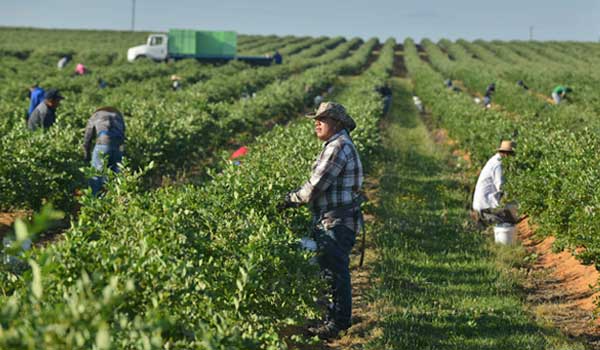
WPS Pesticide Application Section 'Contentious'
While several sections of the new Worker Protection Standards are difficult to understand, the most confusing may be the application exclusion zone, or AEZ. The AEZ is an area around pesticide application equipment that workers and other people are prohibited from entering during a pesticide application and it extends beyond the boundary of the treated area, according to Rose Kachadoorian, ODA pesticide registration and certification leader.
Kachadoorian said that for many growers the application exclusion zone has been the biggest point of contention in the new rules.
“It has caused a lot of issues,” she said.
Under the rules, when using an air-blast sprayer, the application exclusion zone prohibits anybody from being within 100 feet of the sprayer.
“You can see that this could be an issue if you have housing nearby,” she said.
The AEZ for treatments made 12 inches or more above plant foliage and involving larger droplet sizes is 25 feet.
Also, Kachadoorian said, beginning next year, responsibilities for maintaining the application exclusion zone will extend beyond a person’s property and there are different requirements depending on whether the AEZ is on or beyond the farm owner’s property.
“This will address people who are on bicycle trails, who are on roads, even neighbors that you will have to ensure won’t have any exposure,” Kachadoorian said.
The rule stops short of requiring applicators or property owners to notify neighbors when spraying, she said, adding, “But you still will have a legal responsibility to ensure that they are not exposed.”
Part of the confusion surrounding the application exclusion zone is when the 100-foot exclusion zone kicks in and when the 25-foot zone kicks in.
Generally, Kachadoorian said, the 100-foot zone is required for air-blast sprayers and other sprayers that use small droplet sizes. The 25-foot zone is in play for sprays with larger droplet sizes, where booms are 12 inches or more above plants during treatments.
Also, if using a boom sprayer, the zone originates from the end of the boom, according to the EPA website.
Aerial applications, like air-blast sprayers, carry a 100-foot exclusion zone.
Kachadoorian emphasized that the zone being regulated is the area around a sprayer, not the area around a field that is being treated. “It is a moving temporary halo around the application equipment, not a permanent buffer around the treated field,” she said.
She added that according to the EPA, in 2017, the person who owns the property on which the spraying occurs is the person who is responsible for compliance. In 2018, the responsibility shifts to the applicator.
The new Worker Protection Standards, most of which took effect on a federal level in January, are being enforced in Oregon primarily by Oregon Occupational Safety and Health Administration. In Washington, the State Department of Agriculture is enforcing the standards.
Kachadoorian advised interested parties to go to the Oregon OSHA website http://osha.oregon.gov/Pages/topics/worker-protection-standard.aspx for more information on the application exclusion zone and other rules within the new federal Worker Protection Standards.
Information also is available by going to www.epa.gov/agriculture . |
